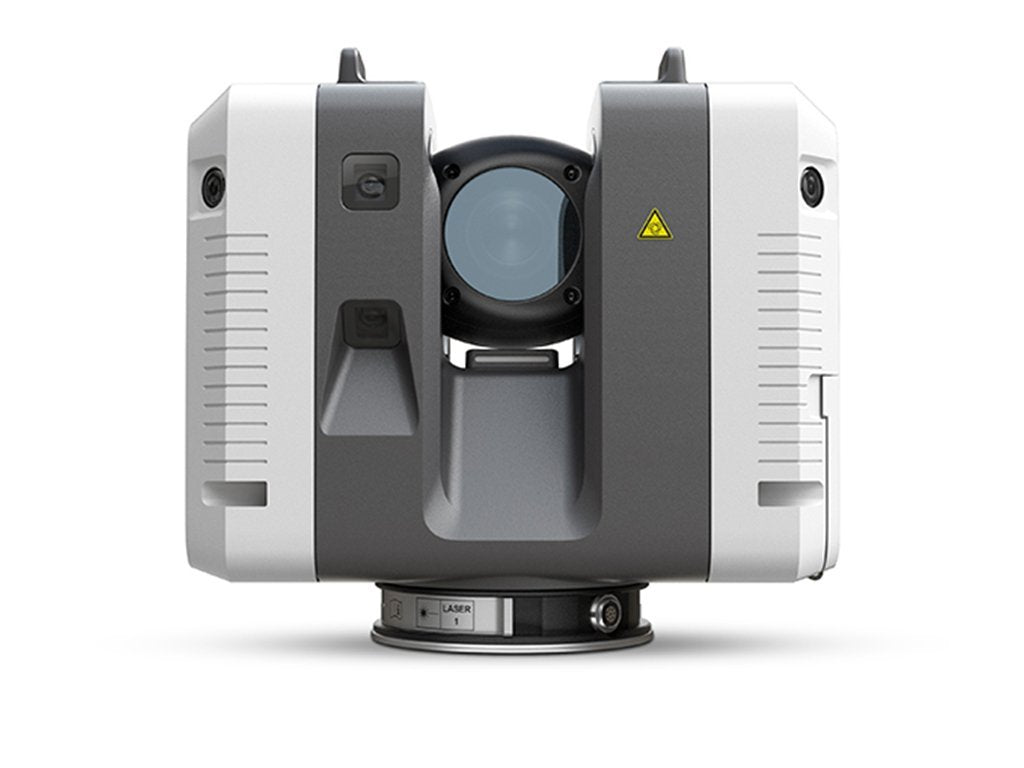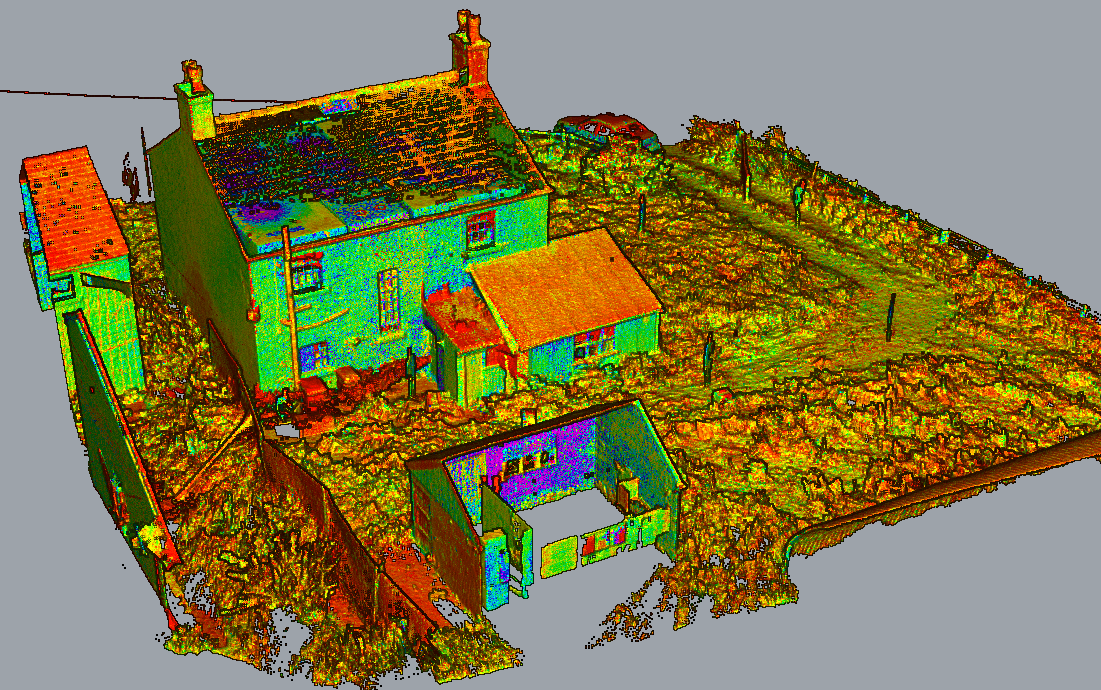Why 3D Scanning Assists With Site Verification
Wiki Article
Exploring the Applications of 3D Laser Scanning in Archaeology and Cultural Heritage Conservation
The combination of 3D laser scanning technology in archaeology and social heritage preservation notes a substantial advancement in just how historic sites and artifacts are recorded and evaluated. This non-invasive method offers accurate spatial data, exposing complex information that were formerly challenging to capture. As the applications of this innovation remain to progress, numerous implications for preservation, paperwork, and education and learning emerge, welcoming further exploration right into its transformative influence on the area.Recognizing 3D Laser Scanning Technology
3D laser scanning modern technology has actually transformed the field of archaeology by providing accurate and detailed spatial data. This sophisticated technology uses laser beams to capture numerous data factors from an item or website, creating a highly accurate three-dimensional depiction (3D Scanning). The resulting factor clouds can expose intricate details of historical websites, frameworks, and artifacts that could be invisible to the naked eyeUtilizing this technology, excavators can record the exact dimensions, shapes, and settings of things with unmatched precision. This approach minimizes the danger of human mistake and eliminates the requirement for extensive hands-on measurements. Additionally, the data accumulated can be evaluated and shared conveniently, assisting in partnership amongst researchers. By integrating 3D laser scanning with GIS and various other digital devices, excavators improve their ability to picture and translate historic contexts, resulting in much deeper insights right into old cultures and environments.
Enhancing Historical Documentation
3D laser scanning greatly improves archaeological paperwork with its capacity to develop accurate website maps. This modern technology promotes thorough artifact analysis, giving understandings that standard approaches might overlook. On top of that, it ensures the preservation of contextual information, which is important for recognizing the connections within historical sites.Precise Site Mapping
While traditional mapping approaches usually fight with catching the complex information of historical sites, progressed laser scanning modern technology uses a revolutionary technique to exact website mapping. This method allows excavators to develop extremely described and exact three-dimensional representations of sites, showcasing topographical variations and structural functions with impressive integrity. The capacity to record numerous information points in a matter of minutes permits for thorough documents, which can be conveniently updated and shared among researchers. Furthermore, laser scanning assists in the measurement of complex geometries that would be tough to assess utilizing conventional tools. Consequently, this technology boosts the accuracy of site maps, contributing substantially to the conservation and understanding of social heritage sources.Comprehensive Artifact Analysis
Laser scanning technology significantly improves the evaluation of historical artifacts, providing scientists with unprecedented information and precision. This approach records elaborate surface area textures, dimensions, and features that conventional paperwork strategies may overlook. By generating high-resolution 3D versions, scholars can very closely examine artefacts without the risk of damage integral in physical handling. This precision enables for far better relative studies, allowing experts to recognize production strategies, stylistic variations, and potential social relevance. In addition, the capacity to manipulate and imagine data in 3 measurements helps with a deeper understanding of artifact capability and usage. On the whole, laser scanning promotes an extra detailed strategy to historical paperwork, making certain that essential information regarding artefacts is preserved for future study and education and learning.Preservation of Contextual Information
Protecting contextual data is vital for improving historical paperwork, as it guarantees that findings are recognized within their initial environmental and cultural frameworks. 3D laser scanning modern technology greatly adds to this conservation effort by catching thorough spatial connections amongst artefacts, structures, and their atmospheres. By generating precise 3D models, archaeologists can record the exact locations and orientations of items in situ, promoting a comprehensive understanding of their context. This technology makes it possible for researchers to review and examine websites long after excavation, preserving the honesty of contextual information. In enhancement, digital records developed through scanning can be shared globally, fostering joint study and public involvement. Inevitably, maintaining contextual information via 3D laser scanning enhances archaeological stories and promotes an extra extensive gratitude of cultural heritage.Preservation of Cultural Heritage Sites
As improvements in modern technology remain to advance, the conservation of social heritage sites has actually come to be progressively reliant on cutting-edge methods such as 3D laser scanning. This modern technology enables for the detailed paperwork of landscapes, artifacts, and frameworks, capturing their exact dimensions and spatial connections in a non-invasive way. By creating high-resolution 3D designs, scientists can monitor and examine deterioration patterns, allowing aggressive conservation methods.In addition, 3D laser scanning helps with the sharing of thorough site information with the international community, promoting partnership amongst historians, conservationists, and excavators. These designs work as important resources for education and learning and public engagement, raising understanding of cultural heritage problems. The electronic records developed can protect against loss due to ecological factors, criminal damage, or forget. In general, 3D laser scanning stands for a transformative strategy to the preservation of cultural heritage, making certain that these sites can be studied and valued by future generations.

Remediation and Repair Initiatives
The in-depth documents accomplished with 3D laser scanning plays a substantial duty in restoration and repair initiatives within archaeology. This innovation offers precise dimensions and high-resolution imagery, enabling accurate digital versions of artifacts and frameworks. These designs act as essential references throughout restoration processes, making it possible for archaeologists to envision the original design and make informed choices regarding products and techniques required for fixing.3D laser scanning facilitates the repair of harmed or shed components by producing in-depth replicas. This process help in making sure that restorations preserve historic integrity while also allowing for innovative methods to bring back websites. The capability to examine wear patterns and structural weak points through scanned information enhances understanding of a site's historic context and its use over time. Consequently, 3D laser scanning not only maintains the physical facets of social heritage however also enhances the story of history, assisting future restoration undertakings.
Educational and Research Opportunities
The assimilation of 3D laser scanning in archaeology opens considerable educational and study opportunities. Academic web link cooperations can enhance the understanding of ancient websites, while specialized training workshops outfit specialists with essential abilities for using this modern technology. With each other, these efforts cultivate a richer involvement with archaeological practices and methods.Academic Collaborations in Archaeology
Collective efforts in archaeology have actually become increasingly important for advancing both instructional and research study opportunities. By promoting partnerships amongst colleges, study institutions, and social heritage organizations, these cooperations help with the exchange of expertise and resources, enhancing the top quality of archaeological researches. Joint projects commonly leverage varied competence, enabling for ingenious methods and thorough evaluations, particularly in the application of technologies like 3D laser scanning. Such collaborations likewise advertise interdisciplinary approaches, engaging fields such as geography, conservation, and history scientific research. On top of that, academic collaborations typically lead to the growth of new educational programs and training programs, preparing the next generation of archaeologists to properly make use of innovative technologies in their job. Eventually, these alliances add to the preservation and understanding of cultural heritage.Educating Workshops for Experts
Training workshops for professionals in archaeology are significantly crucial for improving skills in the application of advanced innovations such as 3D laser scanning. These workshops offer individuals with hands-on experience in utilizing innovative devices and software program, cultivating a much deeper understanding of data capture and analysis processes. Experts can find out to produce exact digital models of historical sites, which noticeably aid in documents and conservation efforts. Furthermore, these training sessions usually include discussions on best techniques and study, advertising understanding exchange among participants. By buying continuous education and learning, specialists can remain upgraded on advancing technologies, ultimately enhancing the effectiveness of their study and cultural heritage conservation efforts. This dedication to skill improvement is essential for advancing the area of archaeology.Future Trends in 3D Laser Scanning for Archaeology
As innovations in innovation remain to improve various areas, the future of 3D laser scanning in archaeology promises to improve both the precision and performance of site documents and analysis. Emerging fads indicate an expanding integration of expert system and artificial intelligence, assisting in automated data handling and interpretation. This development will certainly allow archaeologists to examine complicated datasets quicker, bring about faster insights into historic contexts.Furthermore, the combination of drone innovation with 3D laser scanning is most likely to broaden, enabling comprehensive airborne surveys of historical websites that are challenging to accessibility. The enhancing affordability of scanning devices will democratize access, equipping smaller sized establishments and independent scientists to make use of these devices properly. Additionally, advancements in online fact and enhanced reality will allow immersive experiences for public engagement and education, making archaeological findings a lot more interactive and available. These fads jointly signify a transformative future for archaeology, enhancing preservation efforts and expanding the discipline's outreach.
Frequently Asked Questions
Just How Much Does 3D Laser Scanning Tools Expense?

What Are the Limitations of 3D Laser Scanning?
The restrictions of 3D laser scanning consist of high expenses, prospective information processing challenges, level of sensitivity to ecological conditions, and problem capturing elaborate details in intricate surface more helpful hints areas, which can impact the precision and efficiency of checked depictions. (3D Scanning)
Can 3D Laser Scanning Be Used Undersea?
Yes, 3D laser scanning can be utilized undersea, however it calls for customized tools and strategies to conquer difficulties such as water distortion and restricted exposure. Successful applications have actually been demonstrated in aquatic archaeology and underwater surveys.The length of time Does a Scanning Project Normally Take?
A scanning task normally takes anywhere from a few days to a number of weeks, depending on the complexity and size of the area being scanned, together with the prep work and post-processing demands involved in the job.Exist Details Software Program Requirements for Processing 3D Scans?
Yes, details software requirements for refining 3D scans consist of programs with the ability of managing large point clouds, such as Autodesk Wrap-up, Cyclone, or MeshLab. These tools facilitate evaluation, visualization, and assimilation into various applications successfully.The assimilation of 3D laser scanning modern technology in archaeology and cultural heritage conservation marks a substantial development in just how historical websites and artefacts are documented and assessed. 3D laser scanning technology has actually transformed the field of read review archaeology by giving accurate and detailed spatial information. As improvements in innovation continue to develop, the preservation of cultural heritage websites has become progressively dependent on cutting-edge methods such as 3D laser scanning. As innovations in technology proceed to improve various fields, the future of 3D laser scanning in archaeology promises to enhance both the precision and performance of site documents and analysis. The assimilation of drone innovation with 3D laser scanning is most likely to expand, allowing extensive airborne studies of historical sites that are hard to gain access to.
Report this wiki page